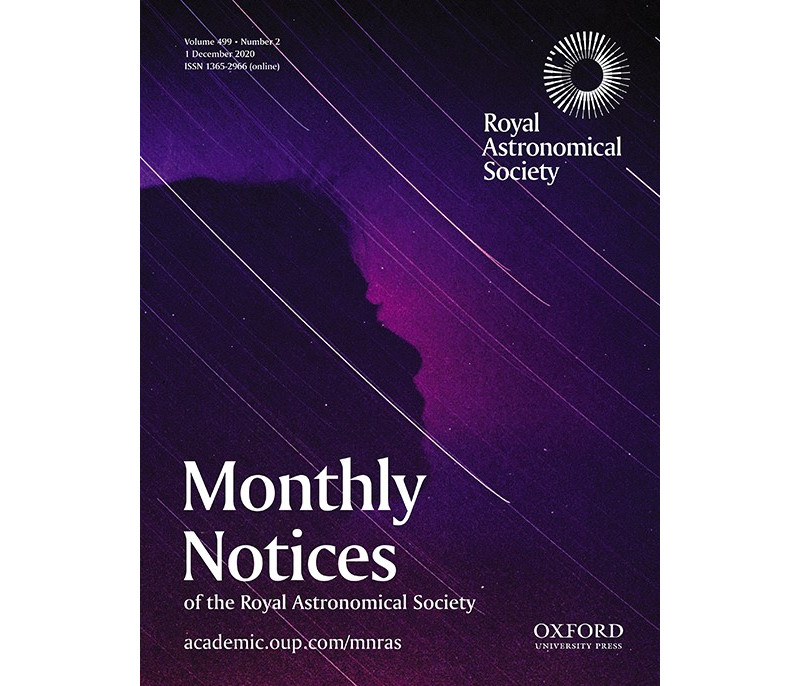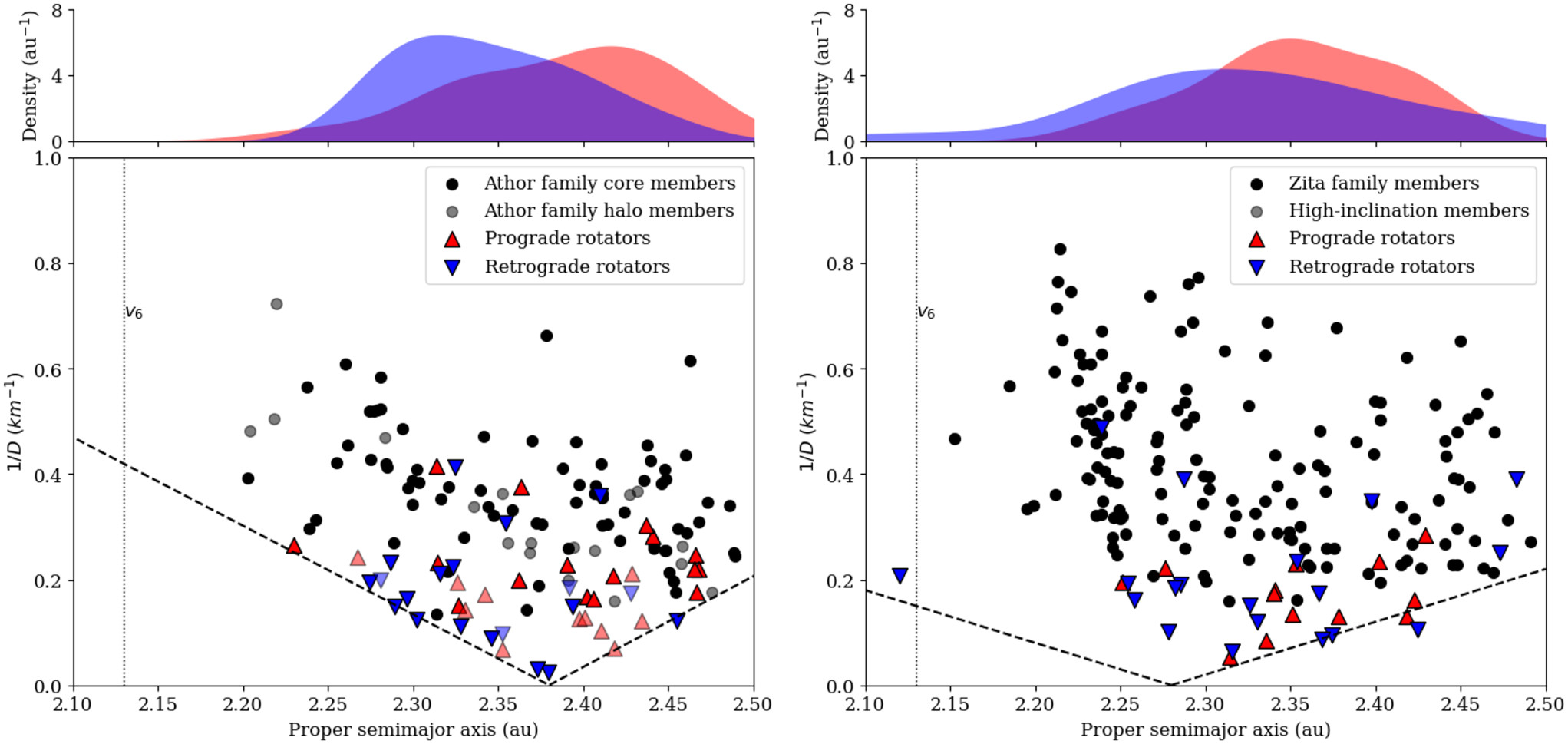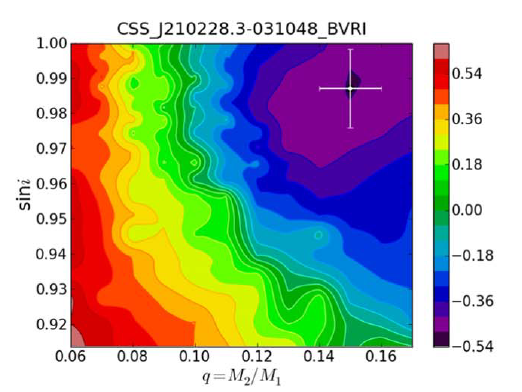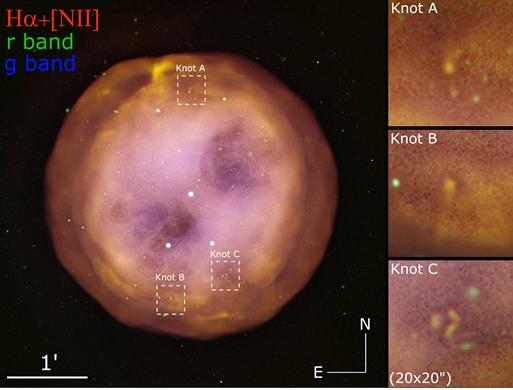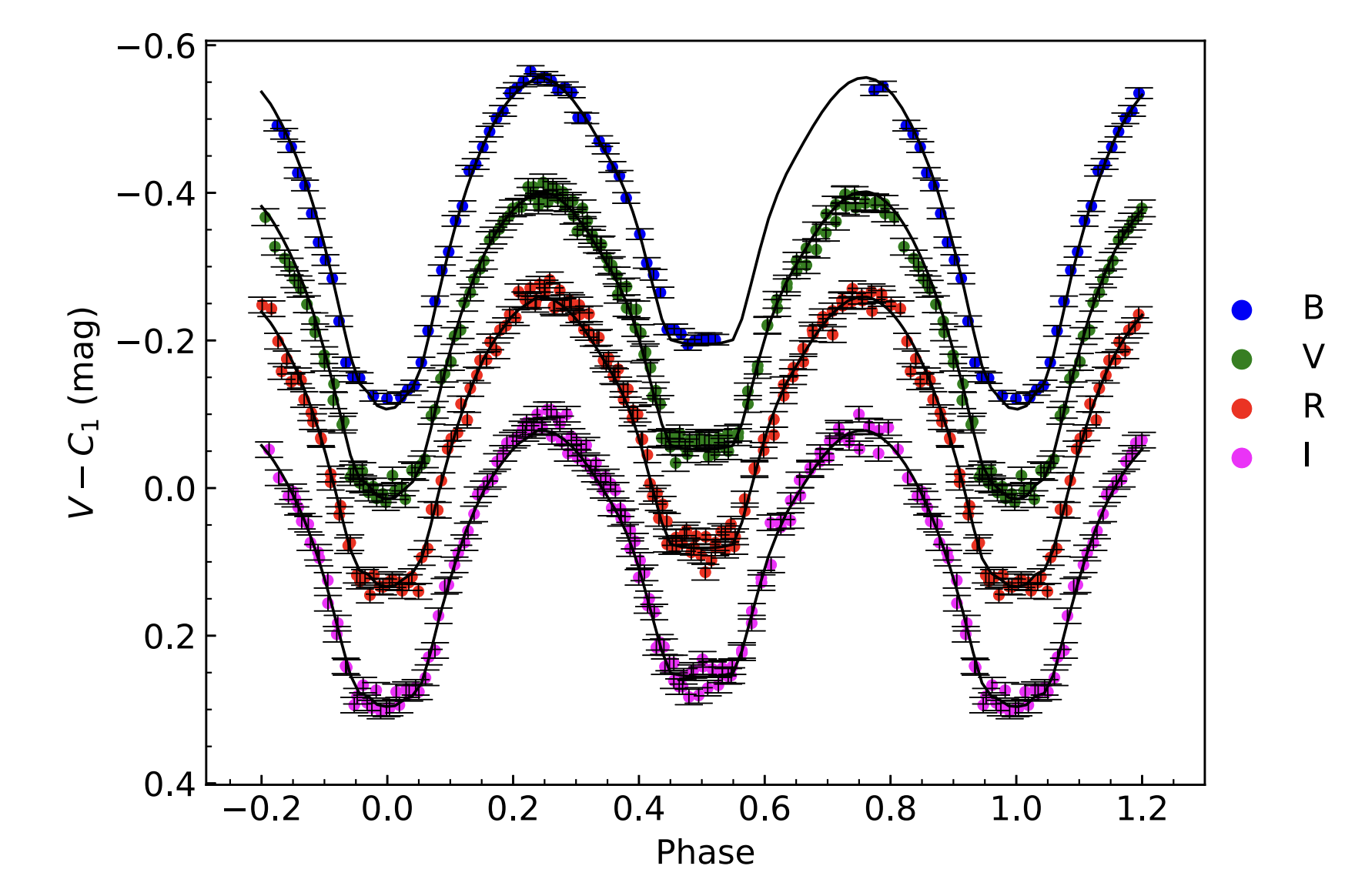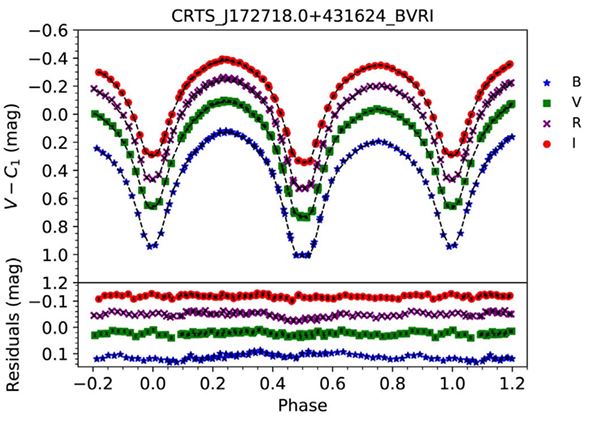Two new nova shells associated with V4362 Sagittarii and DO Aquilae
E J Harvey, M P Redman, P Boumis, S Akras, K Fitzgerald, S Dulaimi, S C Williams, M J Darnley, M C Lam, M Kopsacheilli, S Derlopa
Monthly Notices of the Royal Astronomical Society, Volume 499, Issue 2, December 2020, Pages 2959–2976, https://doi.org/10.1093/mnras/staa2896
Published: 21 September 2020
Abstract
A classical nova is an eruption on the surface of a white dwarf in an accreting binary system. The material ejected from the white dwarf surface generally forms an axisymmetric shell. The shaping mechanisms of nova shells are probes of the processes that take place at energy scales between planetary nebulae and supernova remnants. We report on the discovery of nova shells surrounding the post-nova systems V4362 Sagittarii (1994) and more limited observations of DO Aquilae (1925). Distance measurements of 0.5+1.4−0.2 kpc for V4362 Sgr and 6.7 ± 3.5 kpc for DO Aql are found based on the expansion parallax method. The growth rates are measured to be 0.07 arcsec yr−1 for DO Aql and 0.32 arcsec yr−1 for V4362 Sgr. A preliminary investigation into the ionization structure of the nova shell associated with V4362 Sgr is presented. The observed ionization structure of nova shells depends strongly on their morphology and the orientation of the central component towards the observer. X-ray, IR, and UV observations as well as optical integral field unit spectroscopy are required to better understand these interesting objects.

